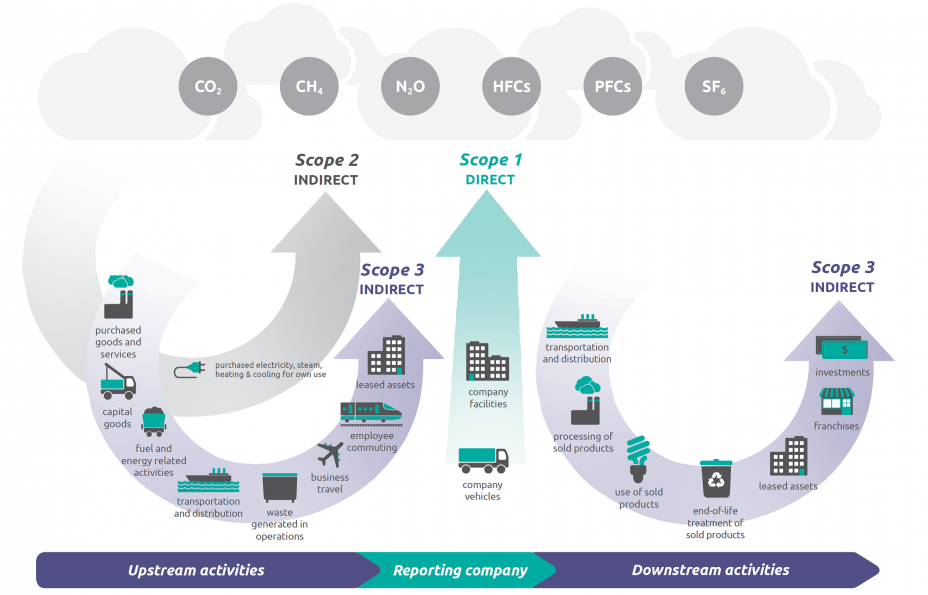Image source: Greenhouse Gas Protocol, ghgprotocol.org
Creating an accurate baseline inventory is key to developing a Net Zero Plan. It's important to know where you are at before you start identifying new measures to pursue. In addition, it's crucial to establish a way to regularly track greenhouse gas emissions so that you can verify that the actions you have taken are making a difference. Finally, conducting regular greenhouse gas inventories can help you see how you are progressing towards your Net Zero goals--and your interim goals. Do not neglect this important step!
The EPA and the Greenhouse Gas Protocol have developed guidelines for conducting greenhouse gas (GHG) emissions inventories. They recommend tracking three types of GHG emissions, as shown in the illustration above. Keep in mind that when you are conducting an emissions inventory, you may not have easy access to data sources for certain types of emissions. Start with what you have and build from there. SEDAC can help you establish appropriate parameters for the inventory.
Scope 1 emissions: These are direct emissions from sources that are owned or controlled by the college, such as on-site fossil fuel combustion and fleet fuel consumption. Many large Universities produce their own electricity, heat or steam. Community colleges may burn fossil fuels, like natural gas, emit green house gases through their gas and diesel fleet, or emit GHG from the use of chemicals in refrigerants and fertilizers. For a community college, this is likely to be the smallest category of emissions. Scope 1 emissions can be calculated using the following data sources:
- Facilities metering data
- Natural gas utility bills
- Fuel consumption records from fleet
- Fertilizers/refrigerants purchased
Scope 2 emissions: These are indirect emissions from sources that are owned or controlled by the agency, including emissions that result from the generation of electricity, heat or steam off site and purchased from a utility provider. For community colleges, this may be the biggest emissions category. Scope 2 emissions can be calculated with electric utility bill data and facilities metering data.
Scope 3 emissions: These are emissions from sources not owned or directly controlled by the community college but related to college activities. This may include emissions generated by individuals commuting to and from campus, funded travel for faculty and staff, and student travel (including study abroad travel). Scope 3 emissions can also include GHG emissions from upstream activities, such as purchased goods and services, transportation and distribution, as well as from downstream activities, like end of life treatment of sold products and investments, as shown in the illustration above. Scope 3 emissions are typically much more challenging to estimate, but it can be done. You might request data from the mass transit district, complete a transportation survey of faculty and staff, gather water bills, measure how many pounds of waste leave the facility, etc.
Other data needed: To complete an emissions inventory, you'll also need some basic information about your institution: the population (full time, part time, faculty, staff), the physical size of building space, and your annual operating budget, research budget, and energy budget.
Carbon offsets: Does your college have a solar array? Have you purchased carbon offsets? Do you have renewable energy credits? If so, then these can be included in the GHG inventory to show how the scopes 1-3 emissions are being offset by your college's actions. Some inventories also include the carbon sequestration potential of trees on campus or land holdings.





